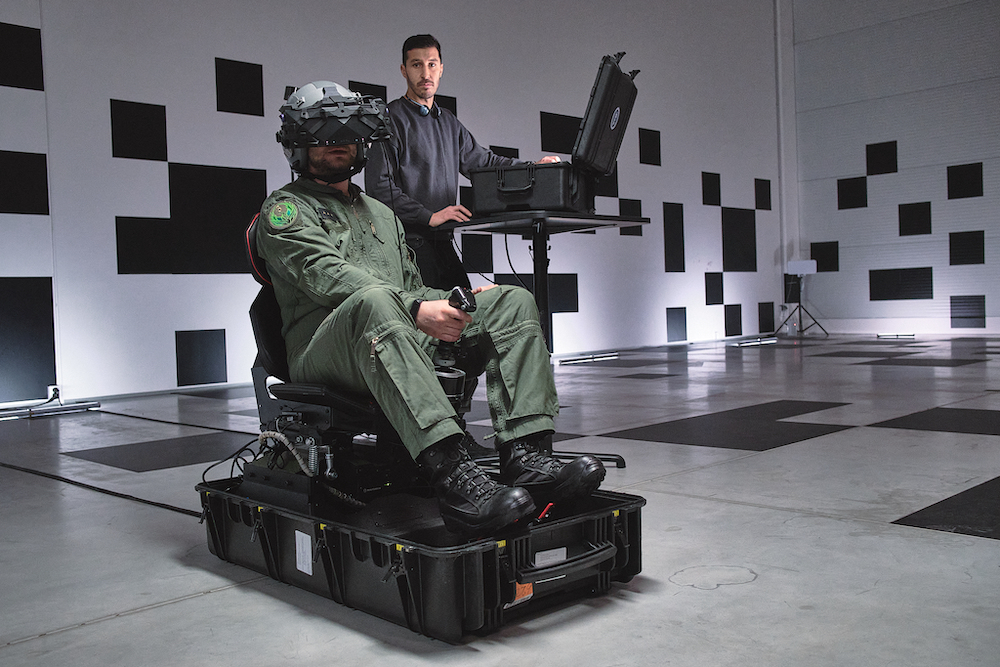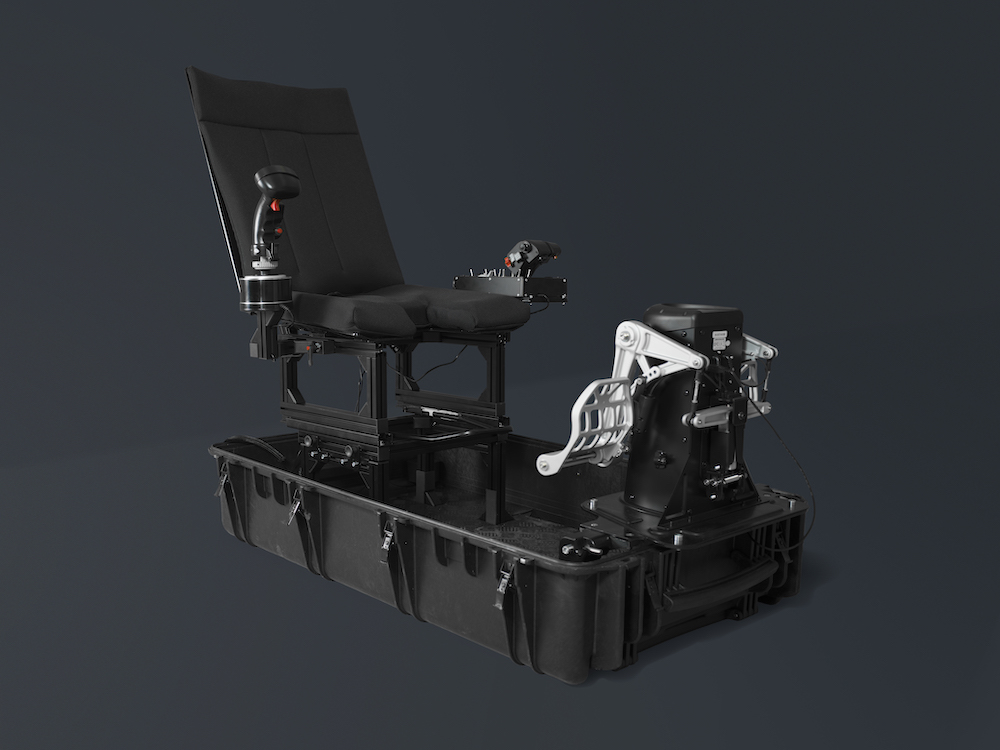
Vrgineers donates one of their Portable Trainer, a reconfigurable virtual pilot trainer, to the Ukraine Airforce to help with securing their airspace and train tactics with mission rehearsal. Based on the results from experimental research on the use of VR and simulators in training pilots, Vrgineers believes that their technologies can speed up and enhance the training of jet fighter and helicopter pilots, while simultaneously reducing associated costs when transitioning from eastern platforms to modern, western platforms.
For decades now there has been a push to modernize the current training methods, driven in part by the costs of altering and maintaining large, dome simulators; the inability to keep training devices up to date as aircraft in the field and corresponding software update faster than training simulators; and an overall lack of expert training professionals. Virtual and mixed reality technologies can significantly enhance the process of pilot transformation from eastern platforms such as Migs and Suchoj to western platforms such as Lockheed Martin F-16, or F-35, Airbus Eurofighters, Dassault Rafales, and Saab Gripens, as well as for multiple helicopters.

“Vrgineers can deliver modern pilot training solutions that offer highly effective training techniques at significantly reduced costs compared to traditional dome simulators,” says Marek Polcak, Vrgineers CEO.
The demand to modernize is even more necessary in countries and air forces that have been dependent on eastern training methods and devices such as Ukraine. Russian manufacturers have discontinued the supply of spare parts, forcing several rescue and transport aircraft to be grounded all over Europe, based on EASA regulations. Additionally, some countries, such as Slovakia, which borders Ukraine, have seen a postponement in deliveries of their multirole fighters and are looking for a faster method of pilot training with a rapid training syllabus.
Vrgineers trainer simulators are developed in close cooperation with the U.S. Airforce and U.S. Navy as a part of the SBIR (Small Business Innovation Research) program to accelerate pilot training, speed up the process and increase the preparedness of pilots. Such trainers offer incredible opportunities to deliver affordable simulators with realistic synthetic training environments, which can be deployed anywhere. They can be interconnected with one another for group training, used individually for mission and tactical training, or full procedural training. Simulators are already integrated with such IGs as Prepar3D, X-Plane, VBS 4, or MCS.
Different styles of the simulators include varying levels of cockpit replicas and fully operational instrumental panels to suit individual organizational needs and budgets. This includes the ‘Portable Trainer’ which comes with a throttle, stick, rudder, and adjustable seat that provides vibration force; the ‘Classroom Trainer’ that can be adapted for any aircraft as a one-to-one authentic cockpit replica enhanced by motion sensation; to the ‘Custom Trainer’ which includes a physical cockpit, control systems, and flying models.
“We see great potential for militaries and private organizations looking for a transition from a Mig to an F-16 or F-35, or from Mi-8 to Blackhawks and need a cost-effective way to train their pilots,” adds Polcak
About Vrgineers
Vrgineers, Inc. is a leader in delivering next-generation virtual and mixed reality pilot training systems (Synthetic Training Environment, STE) to professional and military clients. Vrgineers’ pilot training solution includes portable trainers ready to be packed and taken on missions; reconfigurable classroom simulators that support almost all platforms, from the T6 Texan to the F35; and custom 1:1 simulators that are built specifically for any type of helicopter, jet-fighter, or airliner, and include a fully-functional cockpit replica.
Vrgineers actively improves the training experience for clients like the U.S. Air Force, U.S. Navy, the Royal Air Force, Lockheed Martin, Gulfstream, BAE Systems, NASA, and other technological pioneers. Recognized as a technological leader, Vrgineers was selected by the Small Business Innovative Research program within the U.S. Naval Air Systems Command to develop a next-generation mixed reality pilot training solution, and by the U.S. Air Force to deliver multi-purpose reconfigurable simulators.
About the XTAL™
Designed for professional use, the XTAL™ headset delivers unlimited capabilities for military clients. Equipped with 8K resolution, a 180° field of view, and automatically adjustable lenses, the XTAL™ provides unprecedented immersive experiences, thus positioning itself at the forefront of professional visualization equipment for simulations. Offering a high degree of customization, Vrgineers can deliver individual projects where the XTAL™ is adapted to specific requirements, such as mounting goggles to the pilot’s helmet or even using it for space exploration. Trusted by the U.S. Department of Defense, Vrgineers’ technologies provide the highest possible level of immersion and are employed by organizations such as NASA, Airbus Defense & Space, and BAE Systems.
About Virtual Reality Training:
Experimental training conducted by the United States Air Force in a first-of-its-kind Pilot Training Next (PTN), found experimental virtual reality fighter pilot training is working best for students who want to fly the service’s most advanced stealth platforms. While there is no conclusive evidence as to why exactly, there are several possibilities. PTN thrusts trainees directly and immediately into augmented and simulator training. The simulators help the pilots-in-training to familiarize themselves with the instruments. This syllabus removes the initial academics-focused material, instead of concentrating on self-correction, with a more learner-centric mentality, rather than the traditional ‘one-size-fits-all’ factory line method. This allows each pilot to advance at the pace that best suits their skills, rather than forcing entire classes to advance at a slower rate. VR allows for a wider range of learners and learning styles to be taken into consideration. Rather than teaching to the masses, VR is able to teach to the individual, thus increasing the likelihood that the individual will succeed, and their success is mission success. The use of VR and immersive technologies has already produced impressive results. One program out of Sheppard Air Force Base in Texas (USA) found that students enrolled in a VR fundamentals course finished their training in half the time compared to the standard course completion time.

